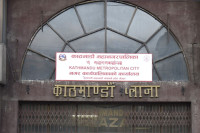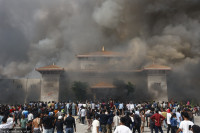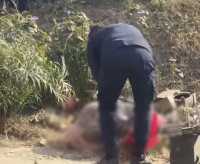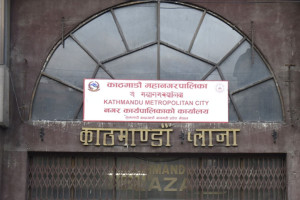Kathmandu
One-third of diesel vehicles fail KMC’s emission tests
On the first day of testing on Monday, drivers and owners were warned, not fined, and instructed to maintain and repair their vehicle engines.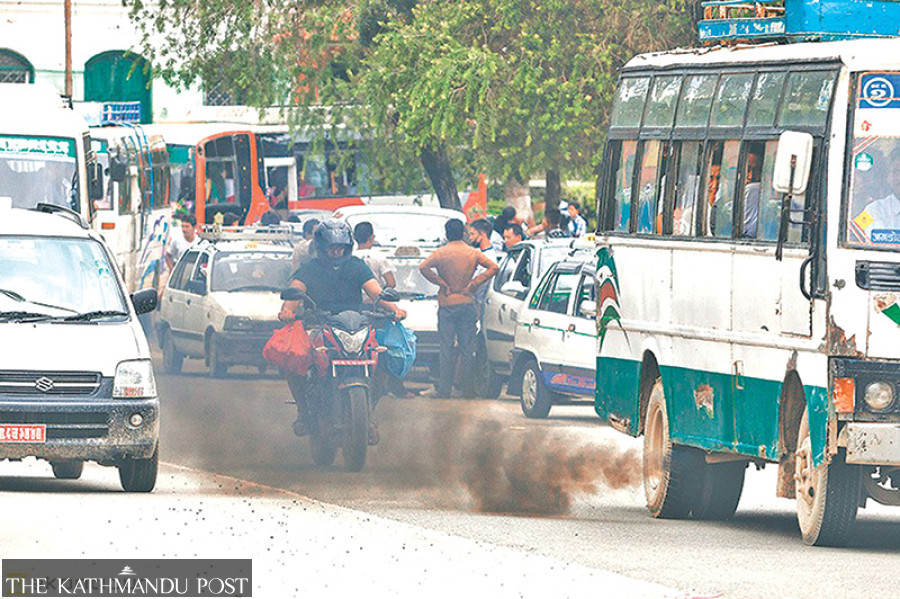
Post Report
Nearly 30 percent of diesel vehicles—buses, micro-buses and tata pick up trucks—operating on Kathmandu’s roads have been found emitting black smoke beyond permissible levels.
Out of 20 randomly tested vehicles on Monday, only 14 passed emission tests.
“Six vehicles failed the emission tests carried out in the Babarmahal area,” said Jagatman Shrestha, traffic expert adviser at the Kathmandu Metropolitan City office. “The emission testing was carried out in coordination with the traffic police, and the federal government’s Department of Environment and the Department of Transport Management.”
Random on-the-spot emission testing of vehicles on the road has been a long overdue plan of the metropolis, which was considered necessary to reduce growing air pollution in the Valley.
Shrestha said that the city office had planned to start testing a little earlier, but due to some bureaucratic hurdles, it could not begin on time.
“We warned drivers and vehicle owners to keep their vehicle engines maintained to avoid fine and legal actions, and took written commitment from the vehicles that failed the testing,” said Shrestha. “Next time, we will slap fines on the vehicles, if they do not follow our warnings.”
Officials at the department said that testing will continue on Wednesday, as Tuesday is a public holiday, and testing of petrol vehicles, including cars and motorbikes, will also be conducted.
The city office has purchased two smoke meters (a portable device for testing vehicle emissions)—one for diesel vehicles and the other for petrol vehicles—to carry out emission testing.
Motorcycles and scooters are being tested for the first time, according to officials. Previous checks focussed only on four-wheelers.
Two mechanical engineers have been trained to carry out the emission checks.
Although vehicle emission testing is mainly the responsibility of federal government agencies, the constitution also mandates local governments to take measures to reduce pollution, officials say.
The metropolis has developed pollution control guidelines as per the KMC Environment and Natural Resources Protection Act-2021.
Officials say these random tests will target vehicles that have already passed emission testing from the Department of Transport Management and received green stickers, as all four-wheelers on the road typically do. However, some vehicles may still emit black smoke for various reasons, including lack of timely servicing and maintenance.
Many automobile owners only service their vehicles ahead of the annual pollution testing.
The municipal environment department has also started monitoring the city’s air quality independently. For that, the city office has installed 19 portable devices in various locations.
Nepal’s air quality reaches hazardous levels several times a year, and the capital city often becomes the world’s most polluted metropolis.
According to IQ AirVisual, a Swiss group that collects air quality data from around the world, Kathmandu’s PM2.5 levels reached 167 micrograms per cubic metre (μg/m3) on Monday afternoon.
PM2.5 refers to particulate matter (solid or liquid droplets) in the air that is less than 2.5 micrometres in diameter. It is among the most dangerous pollutants that can get past the nose and throat to penetrate the lungs and get into the bloodstream. PM2.5 particles are small and likely to stay suspended in the air for long, increasing the chances of people inhaling them.
As per the Environmental Protection Agency’s air quality index, when air quality reaches 151-200, it is considered unhealthy; everyone may experience problems, with sensitive groups feeling more severe effects.




 7.12°C Kathmandu
7.12°C Kathmandu